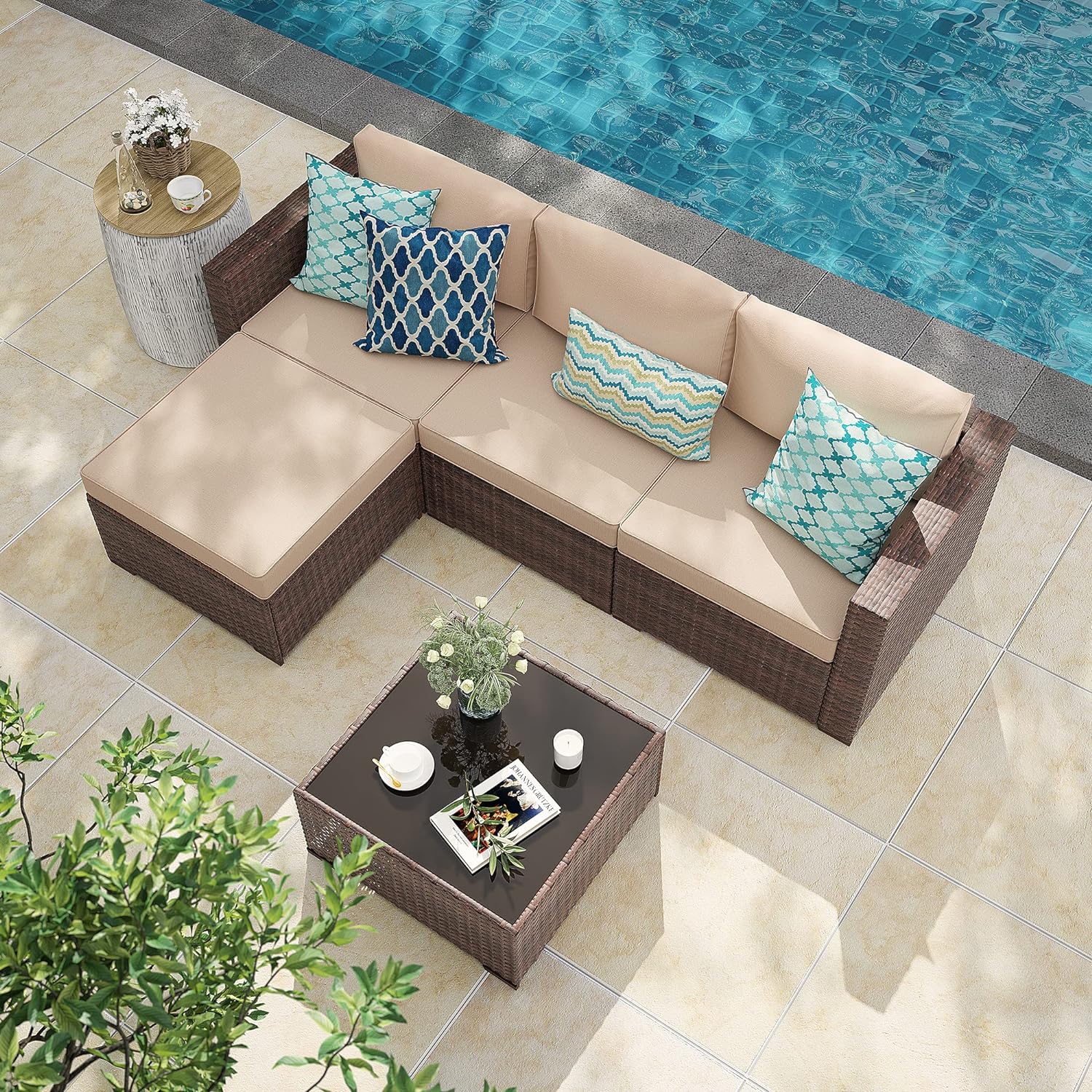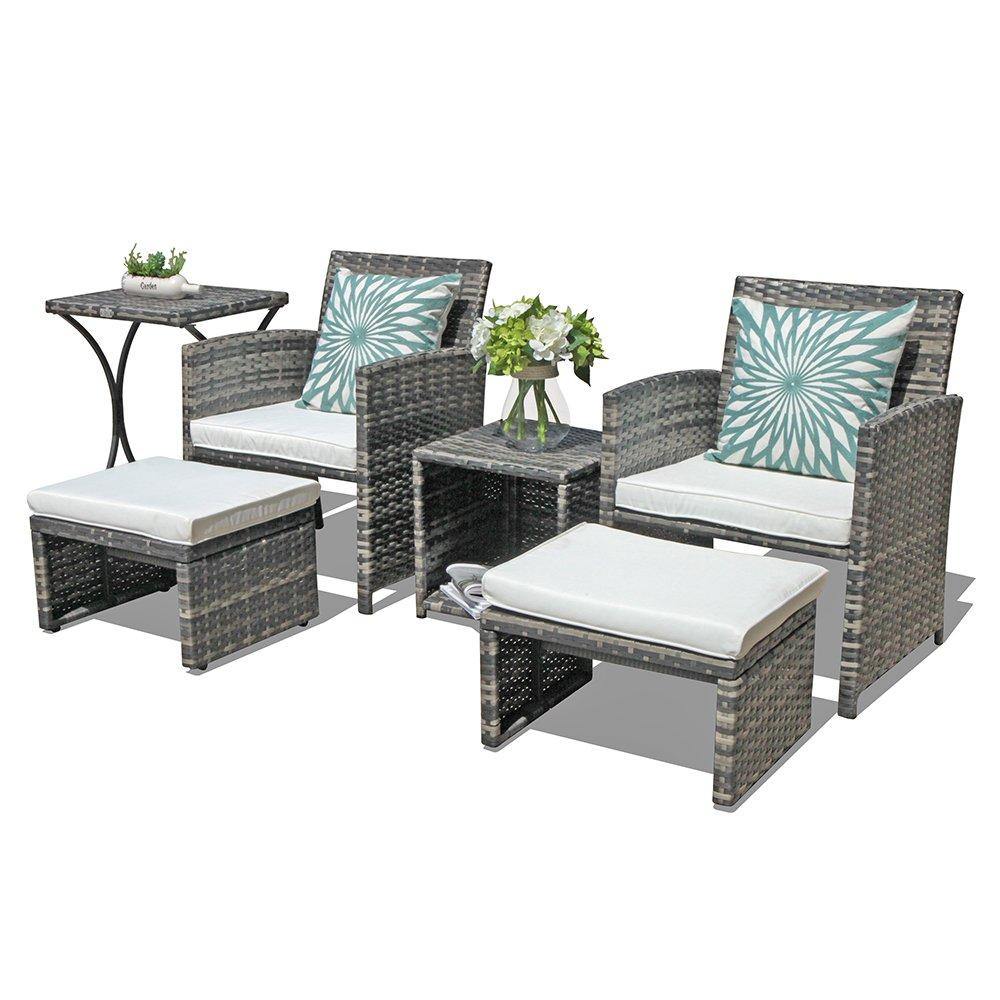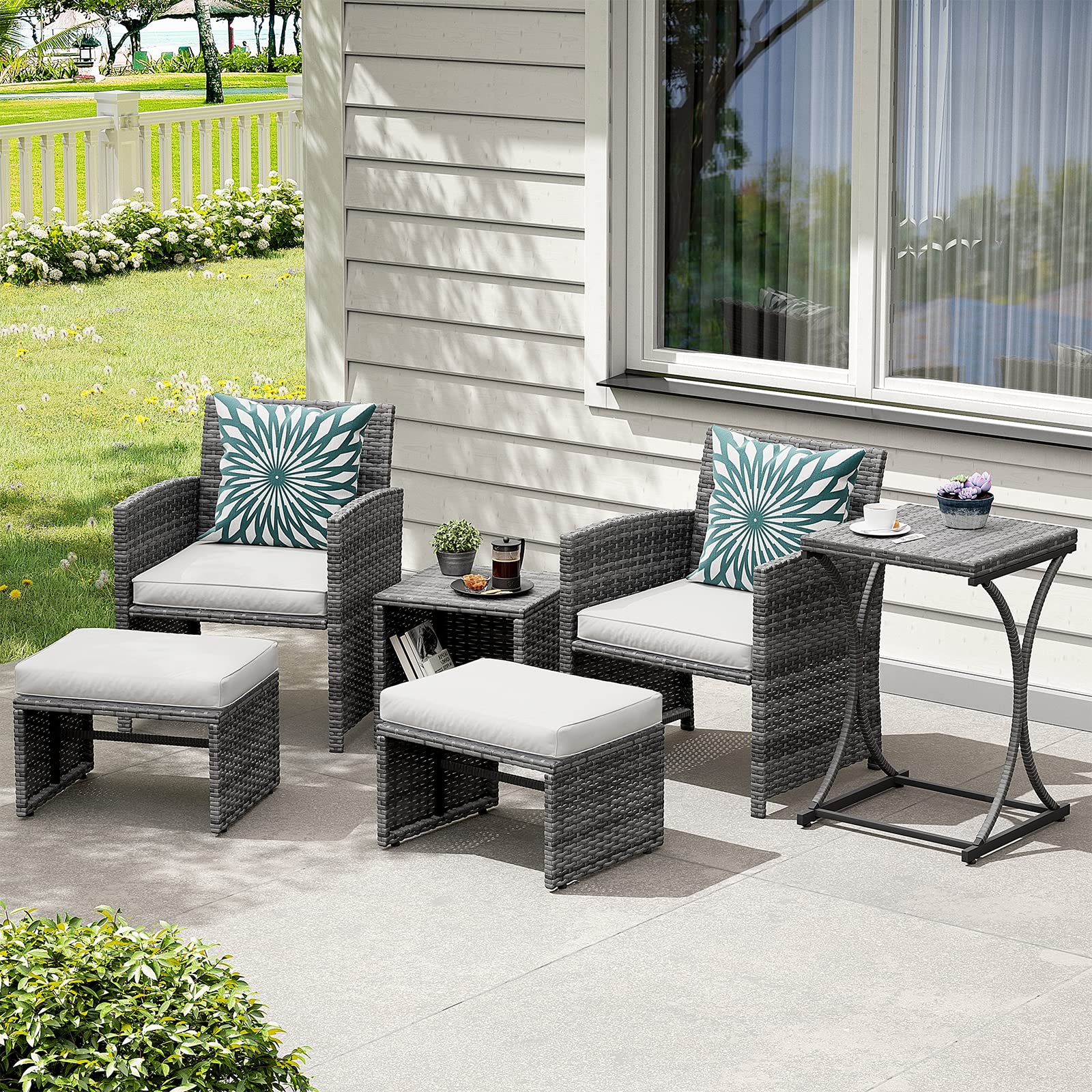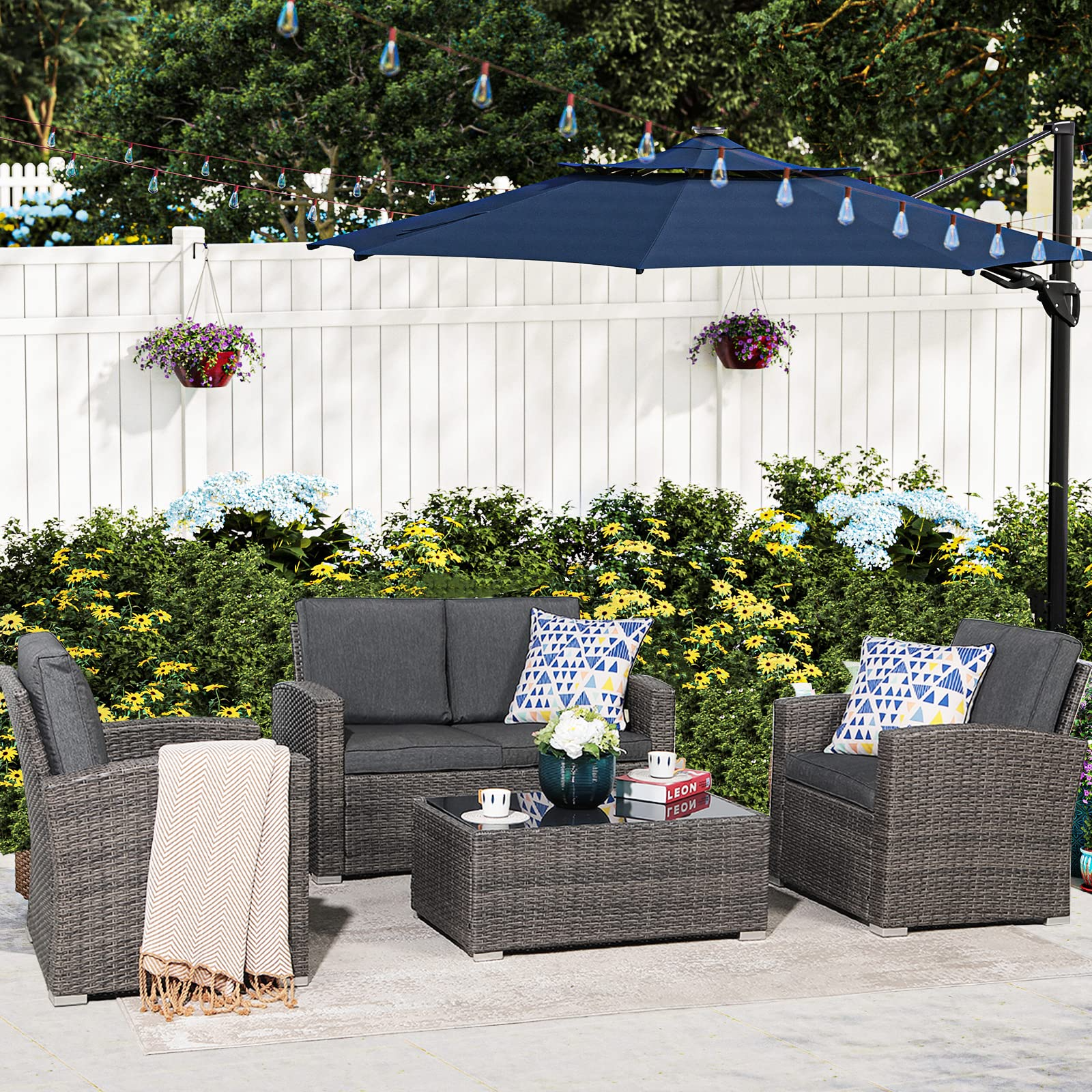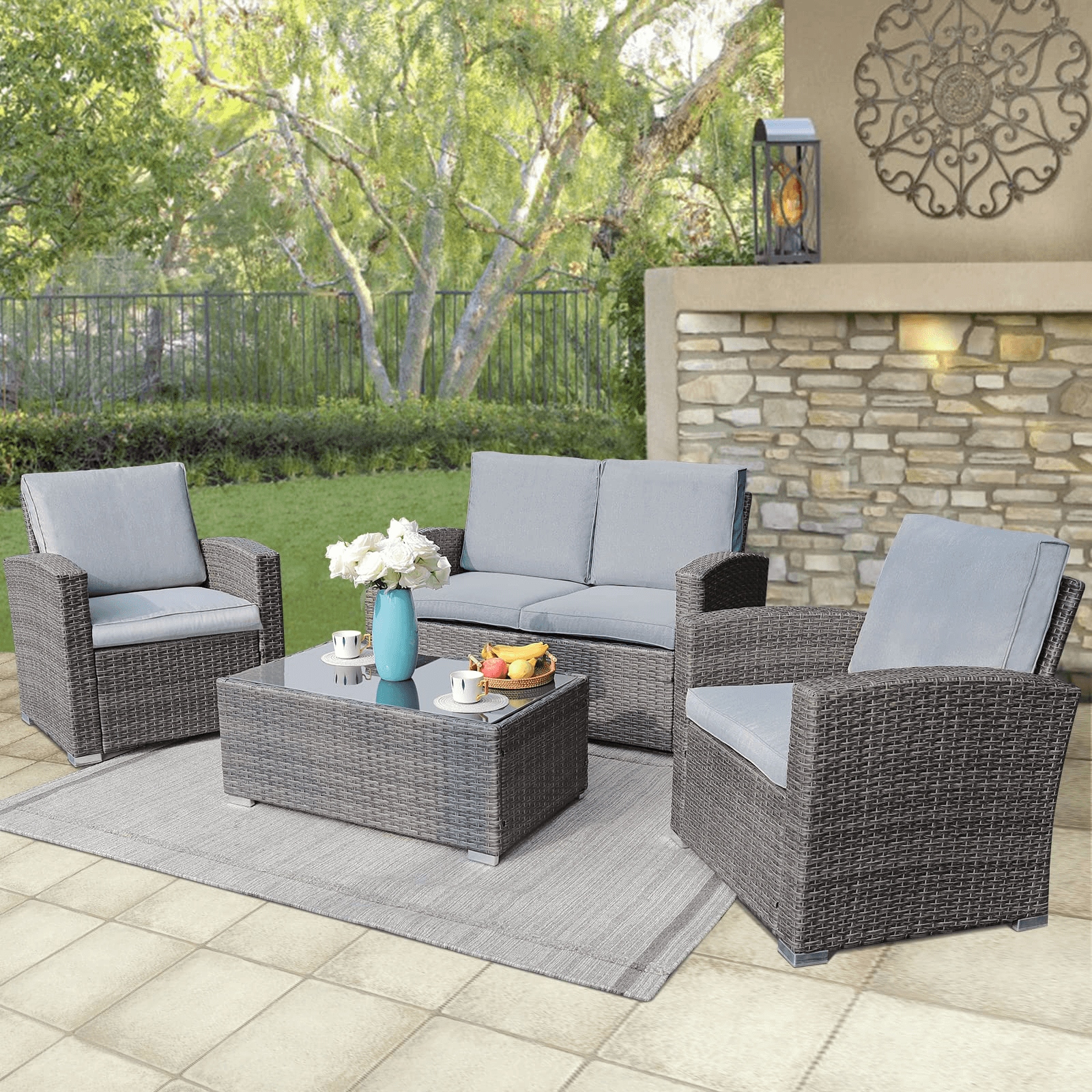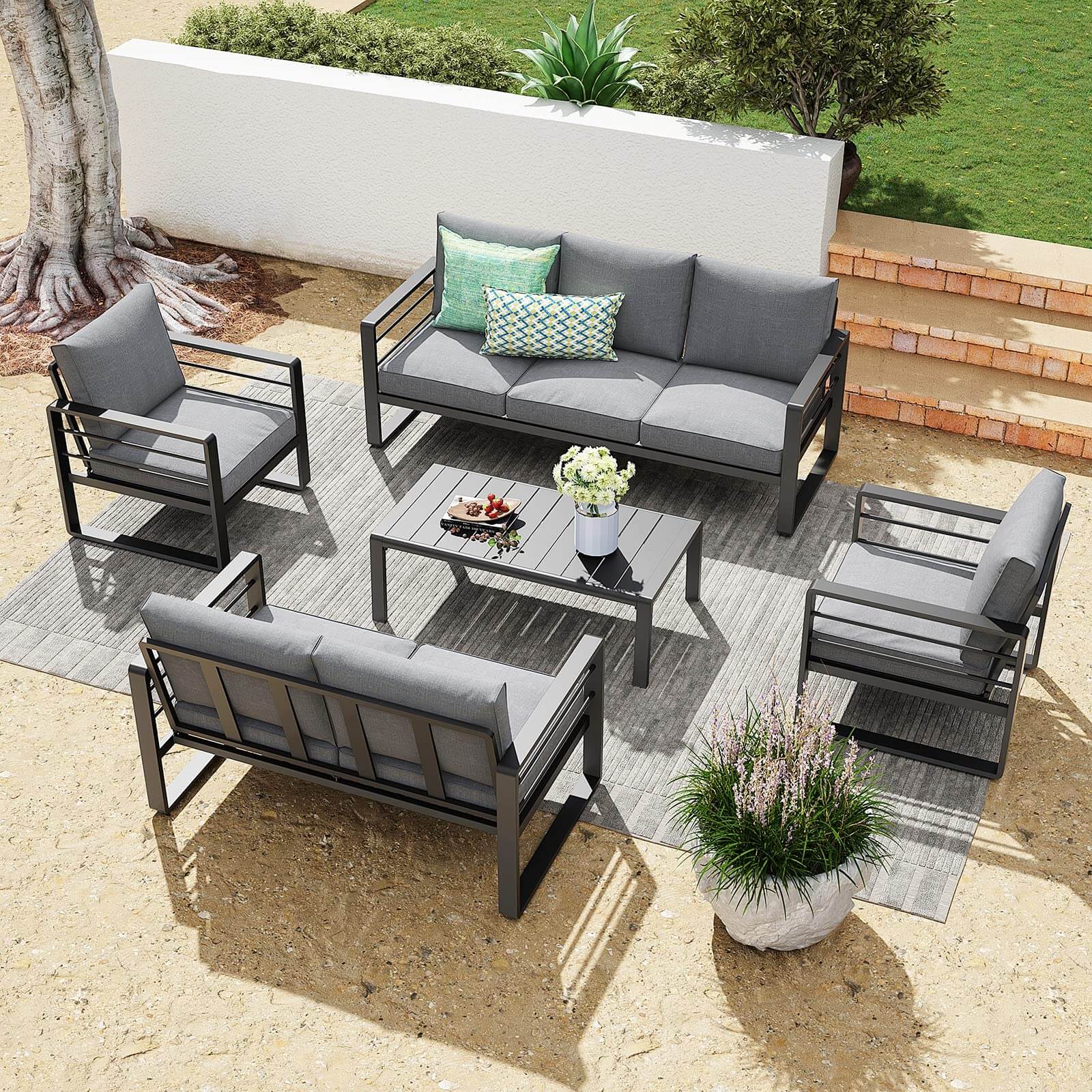Wicker Outdoor Furniture - Natural vs. Synthetic, Which is Better?
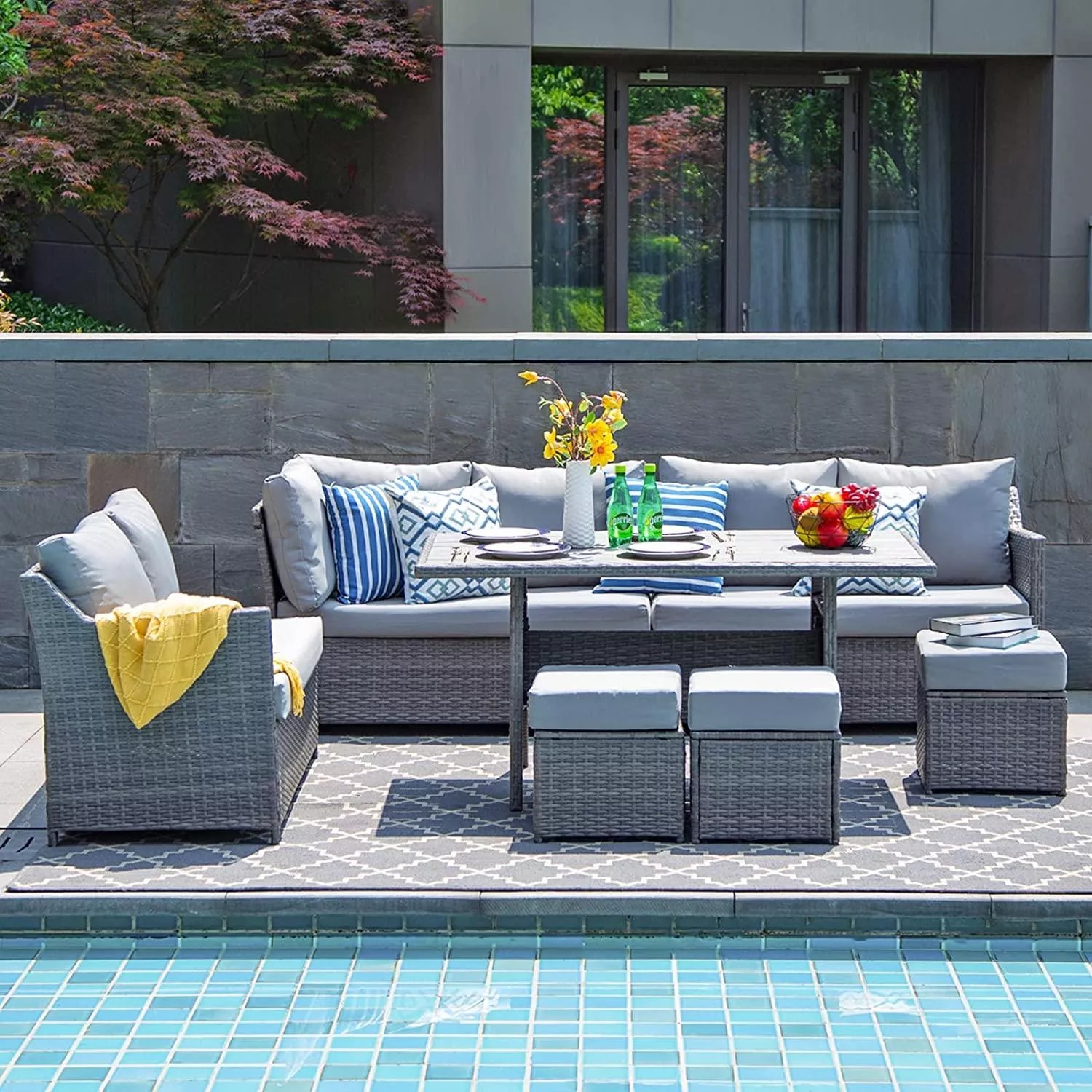
When selecting outdoor furniture for your patio renovation, it can be a difficult task to choose between natural and synthetic wicker. Synthetic wicker is often considered a more practical choice for outdoor use and is preferred by 99% of buyers. However, it is important to note that synthetic wicker refers to a synthetic or imitation material, while natural wicker is made from real plant fibers. Ultimately, the choice between the two will depend on your personal preferences and the specific use and environment of the furniture.
The distinction between wicker and rattan:
Rattan is a natural fiber whereas Wicker is a type of weave. A lot of people use the terms interchangeably but they are two very different things. Wicker refers to the type of weave while rattan is an actual a natural material fiber. Rattan is fiber used to make natural wicker sets.
What Is Natural Wicker?
Wicker furniture crafted from natural materials such as willow, rattan, reed, or bamboo has been utilized for centuries, dating back to Ancient Egypt where it was used to make baskets. While natural wicker has a charming and organic appearance, it is not the best choice for outdoor use as it can become damaged in inclement weather such as rain, sleet, snow, and moisture. Natural wicker is more appropriate for indoor use. For outdoor furniture, synthetic resin wicker is a more practical option. Resin wicker provides the same aesthetic as natural wicker but is designed to be weather-resistant, making it ideal for outdoor use.
What is Synthetic Resin Wicker?
Synthetic resin wicker, also referred to as All-Weather Wicker, is created from resin extracted from plant matter. This resin undergoes a polymerization process to form a hard, epoxy-like material that is capable of withstanding outdoor elements. The different types of resin wickers available range from low-cost plastic options to more durable HDPE varieties.
Synthetic resin wicker is a popular choice for outdoor furniture, such as sectionals, dining sets, and daybeds, due to its weather resistance and durability. It is often built on lightweight aluminum frames, which makes it easy to move, but also susceptible to being blown away in windy conditions. To address this, one may need to take additional steps to secure the furniture to the ground or find ways to weigh it down.
Pros & Cons of Natural Wicker Furniture
Pros:
- Eco-friendly: Natural wicker is made from renewable materials, making it an environmentally responsible choice.
- Aesthetics: Natural wicker has a rustic, earthy look that can add warmth and texture to a room.
- Lightweight: Natural wicker is lightweight, making it easy to move and rearrange.
- Comfort: Natural wicker is flexible, making it a comfortable choice for seating and lounging.
Cons:
- Durability: Natural wicker is susceptible to damage from moisture, sun, and other elements, making it better suited for indoor use.
- Maintenance: Natural wicker may require regular cleaning and conditioning to keep it looking its best.
- Allergies: Natural wicker may cause allergies for some people, especially if the materials are not treated to prevent dust and mold.
Pros & Cons of Resin Wicker Furniture
Pros:
- Durability: Resin wicker is resistant to moisture, sun, and other elements, making it a good choice for outdoor use.
- Low Maintenance: Resin wicker is easy to clean and maintain, and it is often treated with UV inhibitors to prevent fading and damage from the sun.
- Weather Resistant: Resin wicker can withstand exposure to rain, snow, and other forms of inclement weather, making it ideal for outdoor use.
- Aesthetics: Resin wicker is designed to look like natural wicker, providing a charming, natural look for your outdoor space.
Cons:
- Synthetic Material: Resin wicker is made from synthetic materials, which may not be as eco-friendly as natural materials.
- Quality Variation: The quality of resin wicker furniture can vary widely depending on the materials used and the manufacturing process, so it is important to choose a reputable brand.
- UV Degradation: Resin wicker can still degrade over time from exposure to UV rays, especially if it is not treated with UV inhibitors.
- Heavier Than Natural Wicker: Resin wicker is typically heavier than natural wicker, making it more difficult to move and rearrange.
What Is The Difference Between Natural And Resin Wicker Outdoor Furniture?
1. Natural vs. Synthetic Wicker Furniture: Style and design
Natural wicker: Natural wicker furniture often has a more organic and natural look, with variations in color and texture that are unique to the material. Natural wicker is often handwoven, which can result in a more relaxed and rustic look and feel. This can be ideal for outdoor or casual settings, or for creating a beachy or tropical vibe.
Synthetic wicker: Synthetic wicker furniture is often designed to imitate the look and feel of natural wicker. The material is often made to be uniform in color and texture, which can result in a more sleek and modern look. Synthetic wicker can be finished in a variety of colors, allowing for greater customization options. Because of its durability and weather-resistance, synthetic wicker furniture is often used in outdoor or high-traffic areas, but it can also be used in indoor settings as well.
2. Natural vs. Synthetic Wicker Furniture: Durability
Natural wicker: Natural wicker furniture is susceptible to moisture, heat, and other weather conditions, which can cause it to break down over time. In addition, natural wicker is often handwoven, which can result in weaker connections between the fibers and a higher risk of breakage. Natural wicker is typically not recommended for outdoor use or in high-traffic areas.
Synthetic wicker: Synthetic wicker furniture is made from resins that are resistant to moisture, heat, and other weather conditions. This makes it more durable and long-lasting than natural wicker. Synthetic wicker is often used to make outdoor furniture, as well as furniture for high-traffic areas. It is designed to be weather-resistant and can withstand the elements without breaking down or becoming damaged.
3. Natural vs. Synthetic Wicker Furniture: Comfort
Natural wicker: Natural wicker furniture can be quite comfortable, as the fibers have a natural give and flexibility that can conform to the shape of the user. However, natural wicker furniture is often handwoven, which can result in uneven or lumpy surfaces that can be uncomfortable to sit on for long periods of time.
Synthetic wicker: Synthetic wicker furniture is often designed to mimic the look and feel of natural wicker, and can be quite comfortable as well. The synthetic fibers are often woven into a more uniform and consistent pattern, resulting in a smoother and more even surface that is more comfortable to sit on. Synthetic wicker furniture is often designed with additional cushions or padding to increase the level of comfort.
4. Natural vs. Synthetic Wicker Furniture: Care and Maintenance
Natural wicker: Natural wicker furniture requires more care and maintenance than synthetic wicker. Natural wicker is susceptible to moisture, heat, and other weather conditions, which can cause it to break down over time. In addition, natural wicker is often handwoven, which can result in weaker connections between the fibers and a higher risk of breakage. To care for natural wicker, it is important to keep it dry and to avoid exposing it to moisture and extreme temperatures. In addition, natural wicker should be dusted and cleaned regularly to keep it looking its best.
Synthetic wicker: Synthetic wicker furniture is generally easier to care for and maintain than natural wicker. Synthetic wicker is made from resins that are resistant to moisture, heat, and other weather conditions, so it is more durable and long-lasting. In addition, synthetic wicker furniture is often designed for outdoor use, so it is designed to be weather-resistant and low-maintenance. To care for synthetic wicker, it is important to wipe it down regularly with a damp cloth to remove dirt and debris, and to store it in a dry place during periods of inclement weather.
5. Natural vs. Synthetic Wicker Furniture: Price
How much does real wicker furniture cost?
In general, natural wicker furniture is more expensive than synthetic wicker furniture. A small wicker chair might cost around $100, while a larger wicker sofa could cost several hundred dollars or more. Wicker furniture that is handcrafted with high-quality materials and intricate designs can be significantly more expensive, sometimes costing several thousand dollars or more.
Why synthetic wicker furniture can be a less expensive choice?
Synthetic wicker furniture is a cost-effective alternative if you're looking for the wicker aesthetic but don't want to spend a lot of money. Its lower price is due to several factors such as lower material costs, mass production, and improved durability and weather resistance. This makes synthetic wicker a good choice for those who want to enjoy the look of wicker furniture without breaking the bank.
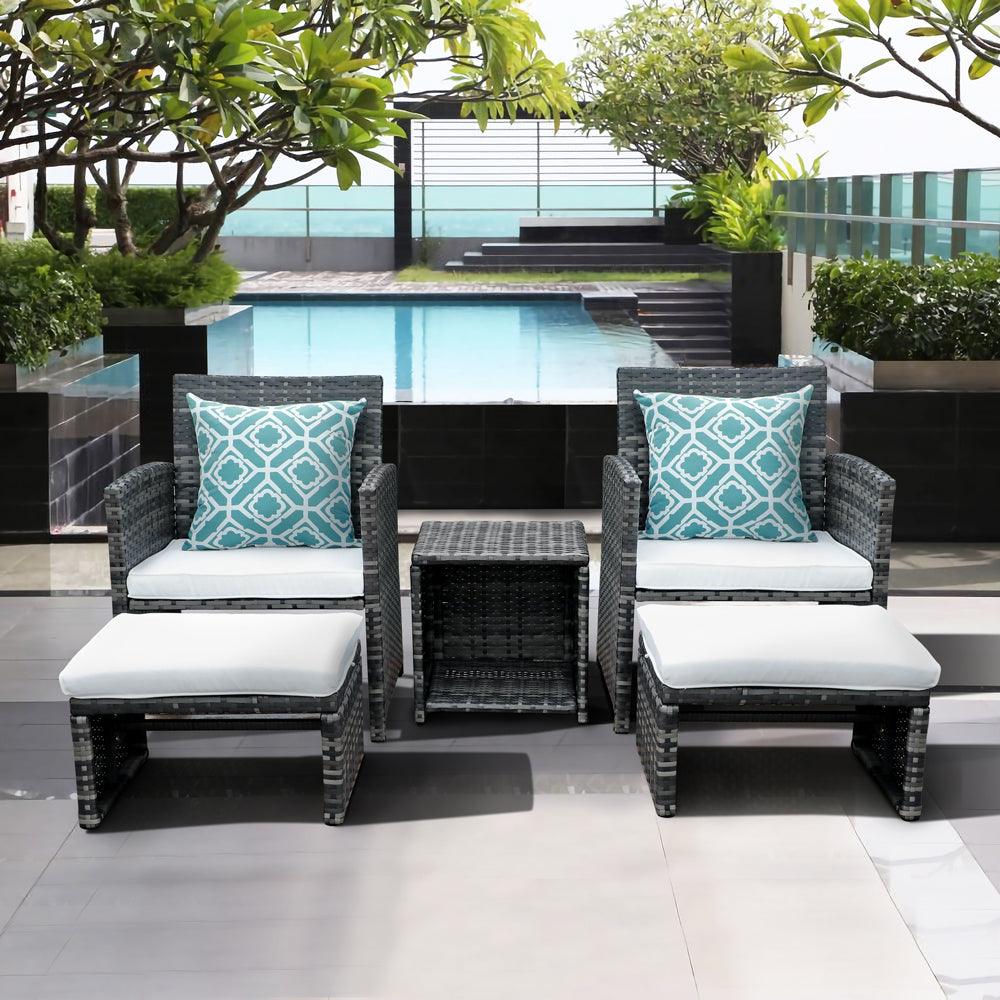 |
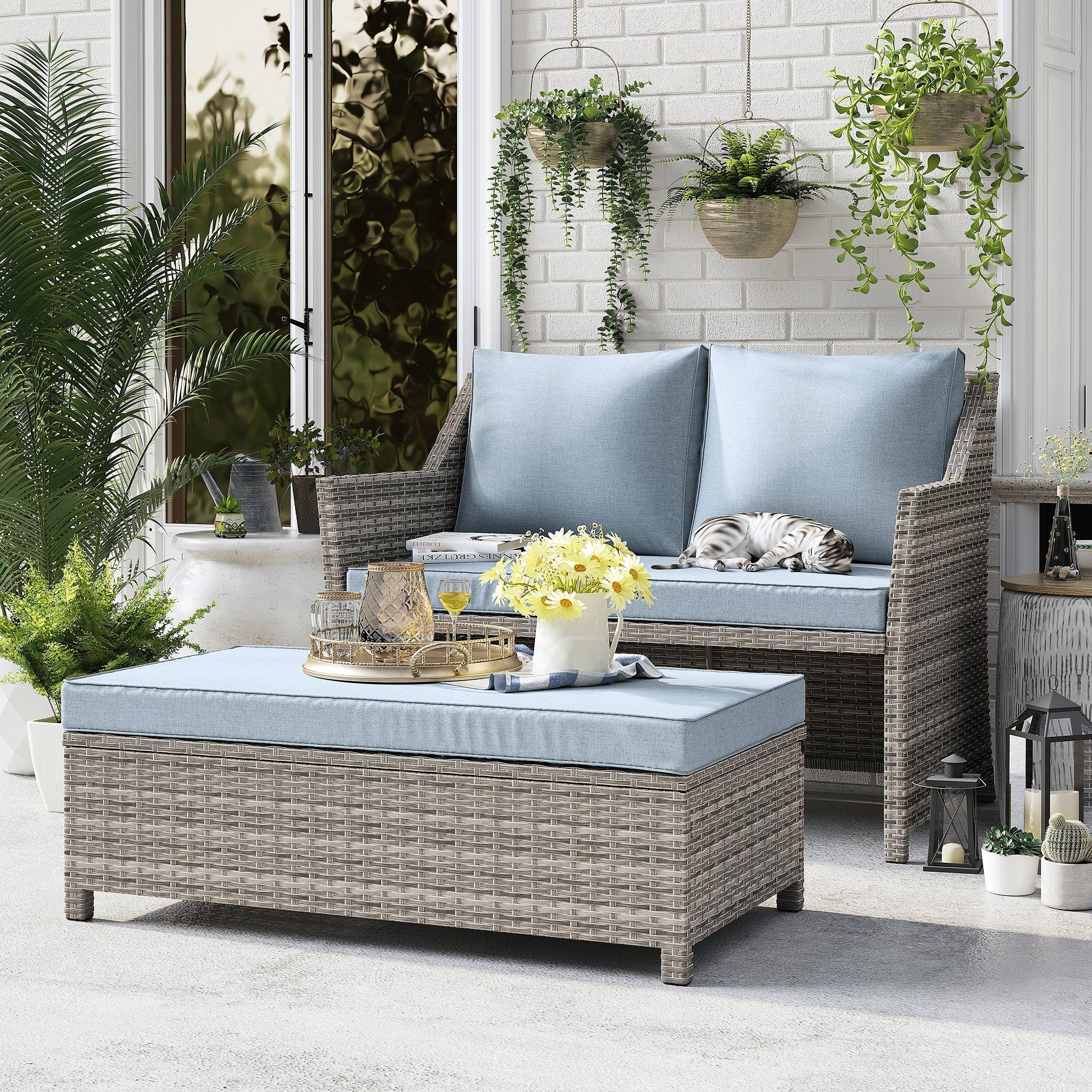 |
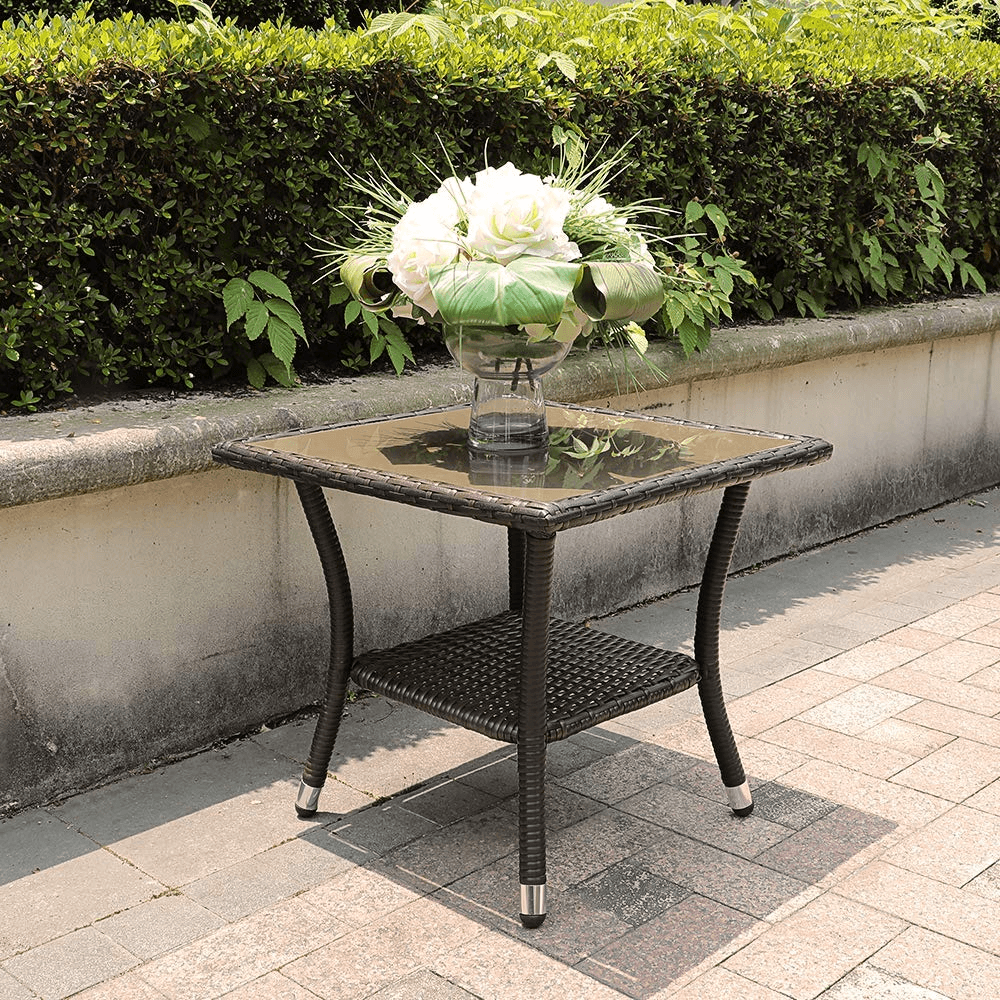 |
|
5pcs Wicker Patio Conversation Set $349.99 , 136 reviews |
2pcs Loveseat Set with Storage Bin $319 , 138 reviews |
$59.99 , 63 reviews |
Which One Is Better?
In America, the benefits and sustainability of wicker made from synthetic resins is clearly a winner here. It is the preferred outdoor application, and natural organic wicker is better for indoors.
But if you prioritize style and comfort, natural wicker may be the better option. If you prioritize durability and ease of maintenance, synthetic wicker may be the way to go. Either way, it's important to consider your specific needs and budget to make the best decision for your outdoor space.


